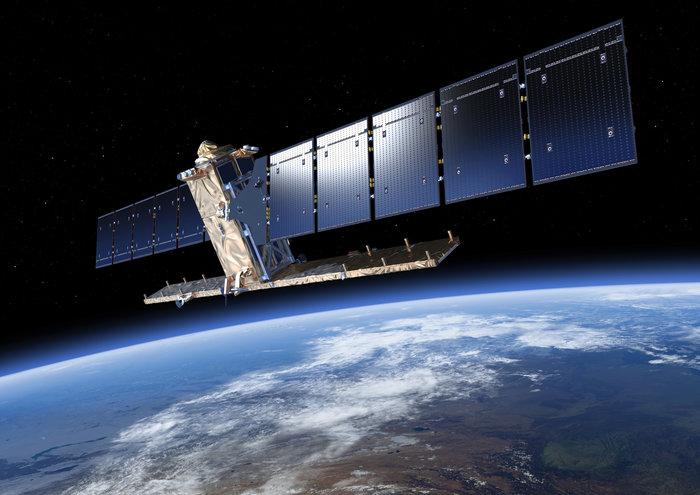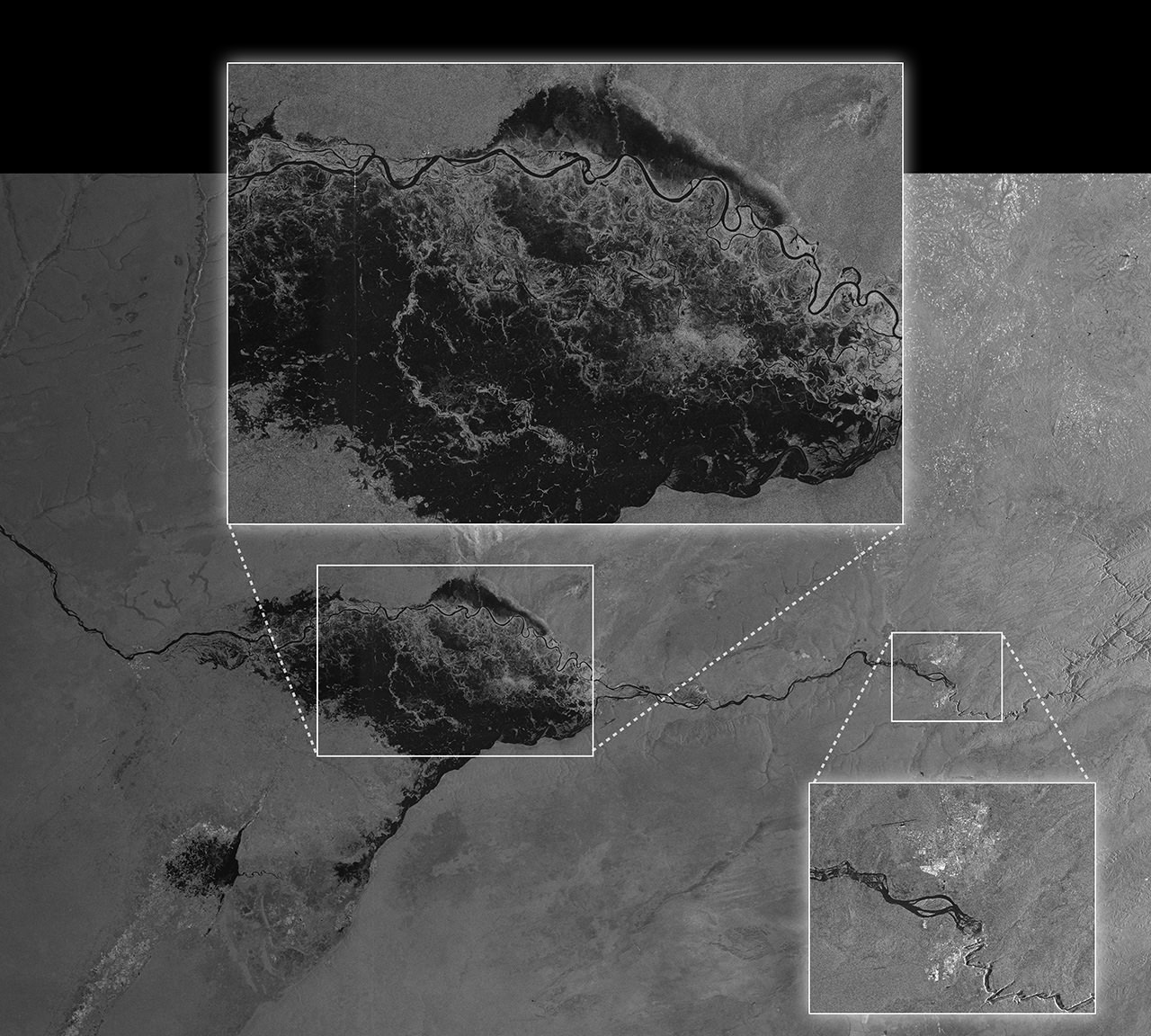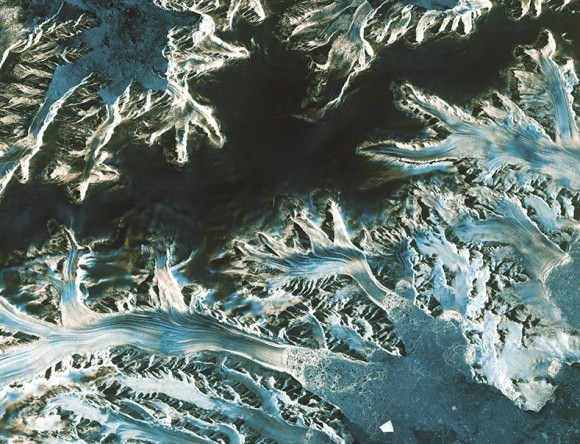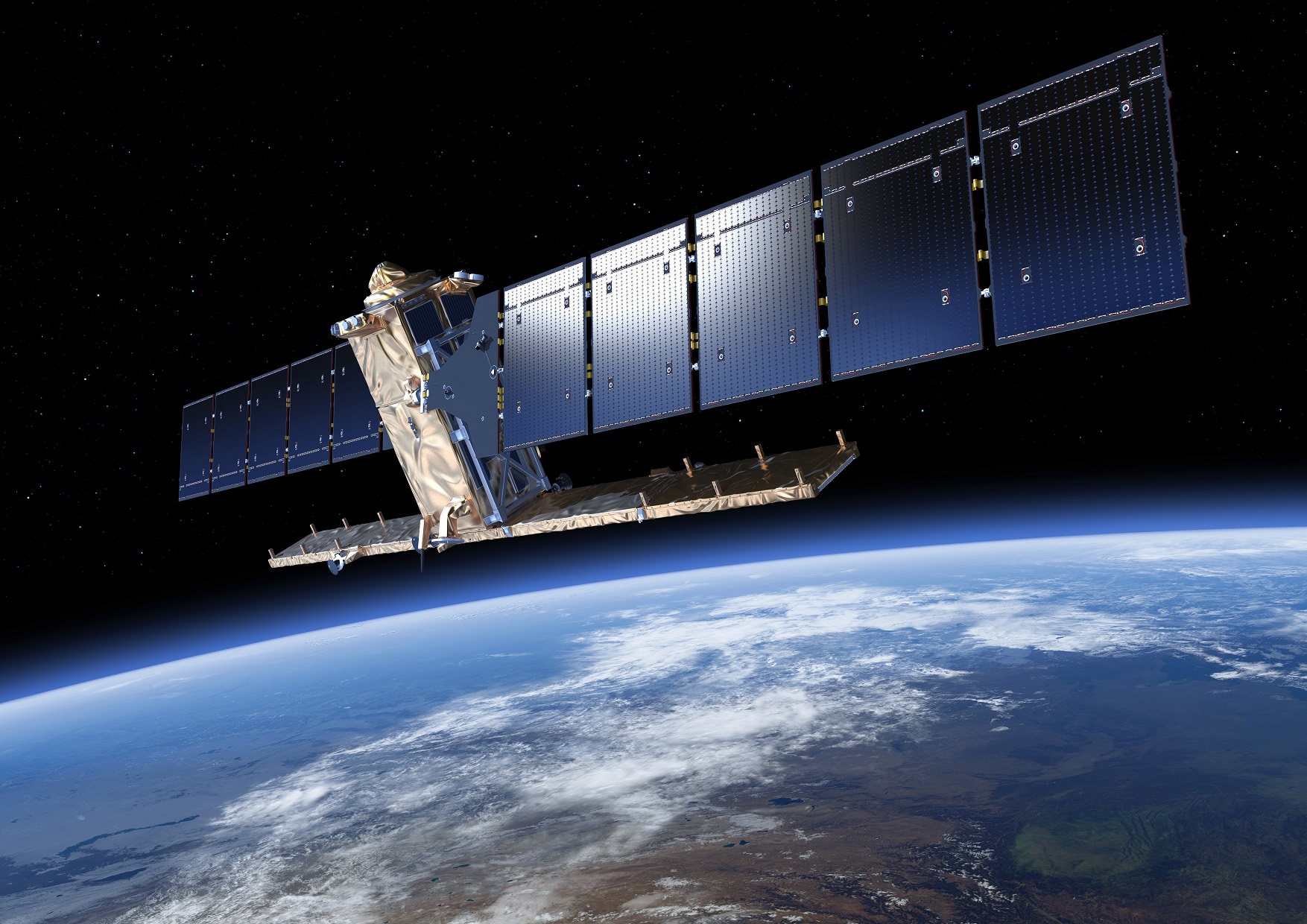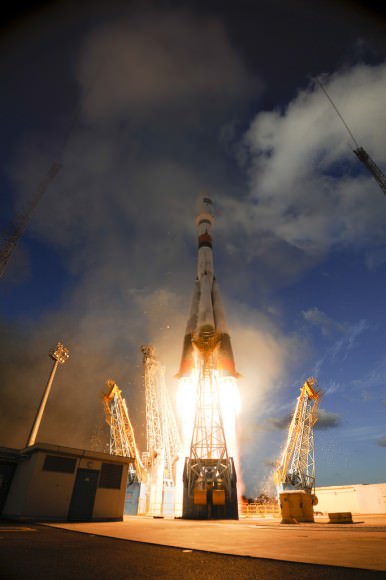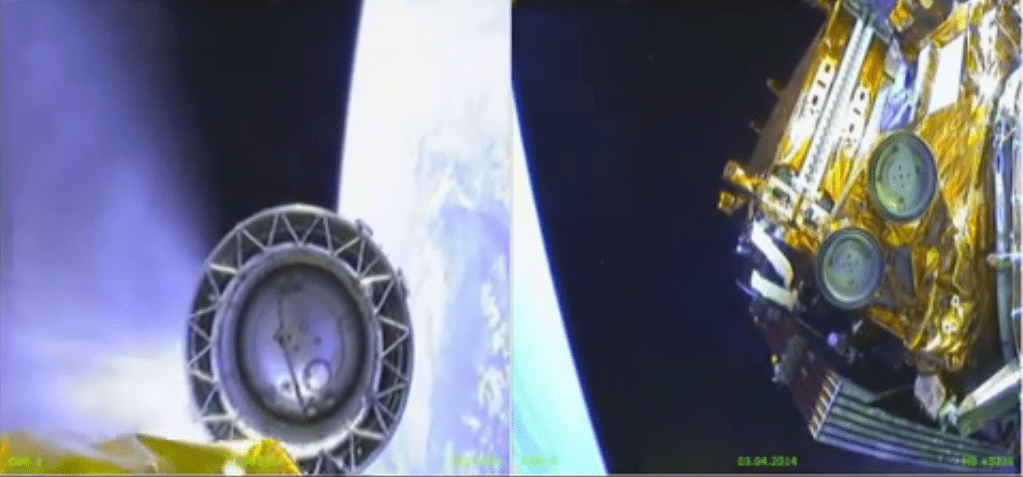One of the worst things that can happen during an orbital mission is an impact. Near-Earth orbit is literally filled with debris and particulate matter that moves at very high speeds. At worst, a collision with even the smallest object can have catastrophic consequences. At best, it can delay a mission as technicians on the ground try to determine the damage and correct for it.
This was the case when, on August 23rd, the European Space Agency’s Sentinel-1A satellite was hit by a particle while it orbited the Earth. And after several days of reviewing the data from on-board cameras, ground controllers have determined what the culprit was, identified the affected area, and concluded that it has not interrupted the satellite’s operations.
The Sentinel-1A mission was the first satellite to be launched as part of the ESA’s Copernicus program – which is the worlds largest single earth observation program to date. Since it was deployed in 2014, Sentinel-1A has been monitoring Earth using its C-band Synthetic Aperture Radar, which allows for crystal clear images regardless of weather or light conditions.
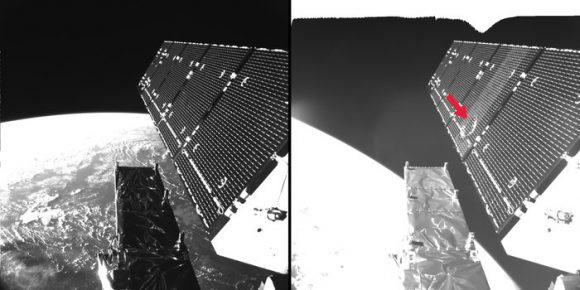
In addition to tracking oil spills and mapping sea ice, the satellite has also been monitoring the movement of land surfaces. Recently, it provided invaluable insight into the earthquake in Italy that claimed at least 290 lives and caused widespread damage. These images were used by emergency aid organizations to assist in evacuations, and scientists have begun to analyze them for indications of how the quake occurred.
The first indication that something was wrong came on Tuesday, August 23rd, at 17:07 GMT (10:07 PDT, 13:07 EDT), when controllers noted a small power reduction. At the time, the satellite was at an altitude of 700 km, and slight changes in it’s orientation and orbit were also noticed.
After conducting a preliminary investigation, the operations team at the ESA’s control center hypothesized that the satellite’s solar wing had suffered from an impact with a tiny object. After reviewing footage from the on-board cameras, they spotted a 40 cm hole in one of the solar panels, which was consistent with the impact of a fragment measuring less than 5 mm in size.
However, the power loss was not sufficient to interrupt operations, and the ESA was quick to allay fears that this would result in any interruptions of the Sentinel-1A‘s mission. They also indicated that the object’s small size prevented them from advanced warning.
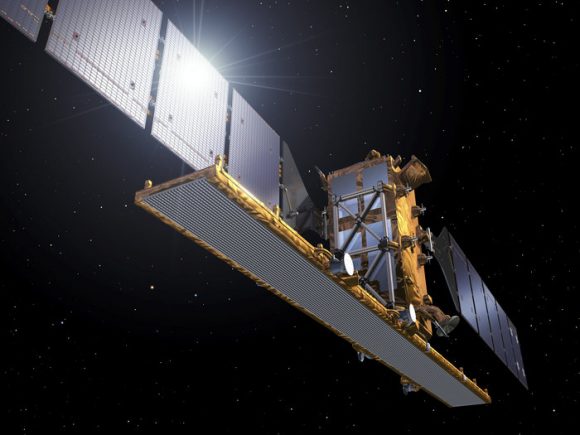
As Holger Krag – Head of the Space Debris Office at ESA’s establishment in Darmstadt, Germany – said in an agency press release:
“Such hits, caused by particles of millimeter size, are not unexpected. These very small objects are not trackable from the ground, because only objects greater than about 5 cm can usually be tracked and, thus, avoided by maneuvering the satellites. In this case, assuming the change in attitude and the orbit of the satellite at impact, the typical speed of such a fragment, plus additional parameters, our first estimates indicate that the size of the particle was of a few millimeters.
While it is not clear if the object came from a spent rocket or dead satellite, or was merely a tiny clump of rock, Krag indicated that they are determined to find out. “Analysis continues to obtain indications on whether the origin of the object was natural or man-made,” he said. “The pictures of the affected area show a diameter of roughly 40 cm created on the solar array structure, confirming an impact from the back side, as suggested by the satellite’s attitude rate readings.”
In the meantime, the ESA expects that Sentinel-1A will be back online shortly and doing the job for which it was intended. Beyond monitoring land movements, land use, and oil spills, Sentinel-1A also provides up-to-date information in order to help relief workers around the world respond to natural disasters and humanitarian crises.
The Sentinel-1 satellites, part of the European Union’s Copernicus Program, are operated by ESA on behalf of the European Commission.
Further Reading: Sentinel-1

